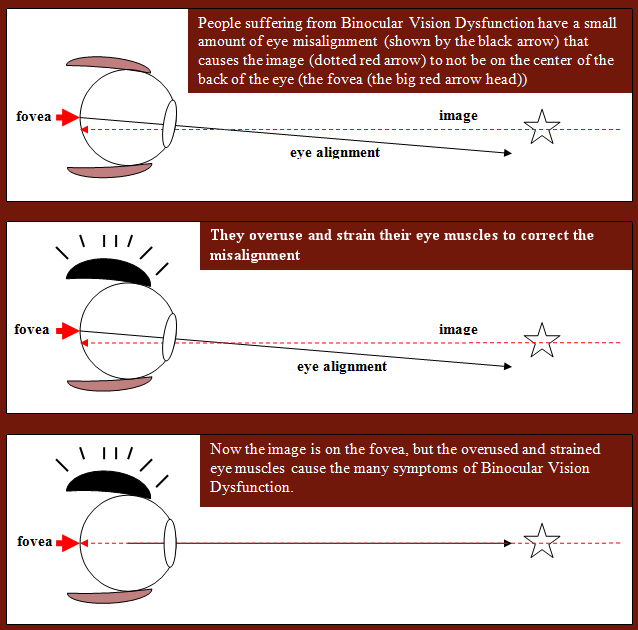

Can Binocular Vision Dysfunction Make it Difficult to Drive?

Over the next several visits, the aligning lenses are fine-tuned and continue to improve and eliminate the symptoms of BVD. The average patient suffering from BVD will notice a 50% reduction of symptoms by the end of their first visit. Patients oftentimes report feeling noticeably better immediately. Once this occurs, the eye muscles no longer have to strain, providing relief from headaches, dizziness, blurred vision, and all other symptoms. This is done with our specialized micro-prism lenses, which bend light in such a way that the image seen by the eye is moved into the position it needs to be in order to once again realign the images. How Do You Fix Binocular Vision Dysfunction?īVD is treated by correcting the eye misalignment. If your primary care doctor or specialist has been unable to find the cause of your symptoms, it could be BVD. Psychological Symptoms: Feeling overwhelmed or anxious when in large contained spaces like malls or big box stores, in crowds, or while driving (symptoms similar to those seen in patients with anxiety or agoraphobia).Vision Symptoms: Blurred vision, double or overlapping vision, shadowed vision (symptoms similar to those seen in patients with MS), light sensitivity, difficulty with glare or reflection.Reading Symptoms: Difficulty with concentration (symptoms are similar to those experienced with ADHD), difficulty with reading and comprehension, skipping lines while reading, losing one’s place while reading, words running together while reading (symptoms similar to those seen with a learning disability).Balance and Coordination Symptoms: Motion sickness, nausea, poor depth perception, unsteadiness while walking or drifting to one side while walking (“I’ve always been clumsy”), lack of coordination with symptoms seen in patients with MS, patients, who have experienced a stroke, an inner ear disorder, or Meniere’s Disease.Pain Symptoms: Such as face ache, eye pain or pain with eye movement (symptoms similar to sinus problems, migraines, TMJ) neck ache and upper back pain due to a head tilt (similar to spinal misalignment symptoms).Other symptoms often accompany the headaches and dizziness, including pain, difficulties with balance and coordination, reading, vision, and psychological symptoms. The dizziness is often described as feeling disoriented or lightheaded. Patients with BVD tend to experience headaches in the front of the face or the temples. Headaches and dizziness are the two most common symptoms associated with BVD. How Do You Know If You Have Binocular Vision Dysfunction? Our Frequently Asked Questions contain common questions we receive relating to Binocular Vision Dysfunction.


 0 kommentar(er)
0 kommentar(er)
